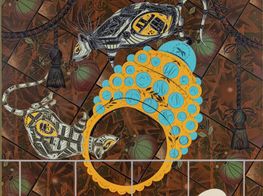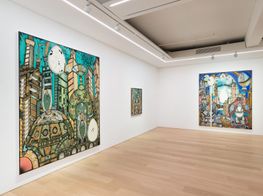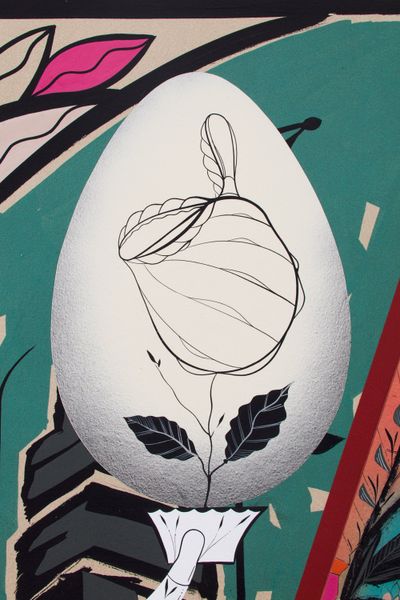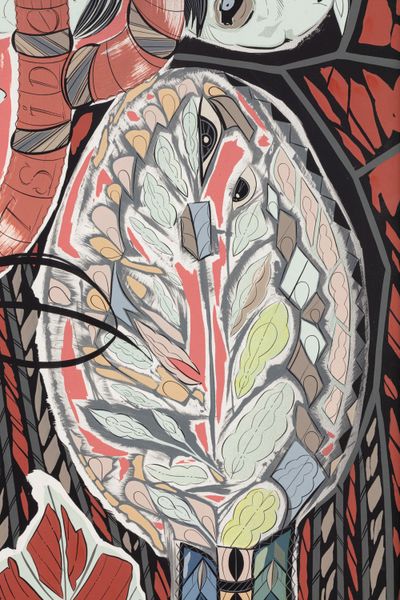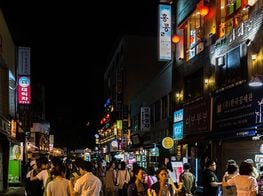
Lari Pittman Envisions a Brighter Future at Lehmann Maupin Seoul
Lari Pittman's first-ever show in South Korea reaffirms the importance of big cities and both their metaphorical and physical portrayal of 'light, hopefulness and complex enlightenment.'
Titled Opaque, Translucent and Luminous (15 March–7 May 2022), the exhibition will inaugurate Lehmann Maupin's new and expanded gallery space in Seoul.
Over the course of his decades-long career, Pittman has developed a distinctive painting style, which includes densely layered compositions using various signs and symbols. Text, colour, and imagery overlap to form complex narratives through fragmented canvases.
Pittman's skilful layering technique utilises a visual vocabulary of signs and symbols, including bells, animals, and ropes, that can be deciphered throughout his work.
Pittman breaks down the rigid boundaries of dichotomous constructions, bringing together different scenes inspired by folk art, commercial advertising, and design. From seemingly banal objects to explicit scenes, Pittman's work invokes questions surrounding gender, sexuality, nationality, and identity.
Although his works are emblematic of the generation of Los Angeles artists from the 1980s, Pittman also investigates wide-ranging topics, such as love, death, sex, and art.
His earlier works show his interest in issues such as the history of racial violence in the United States and the fight for LGBTQ+ civil rights. While playful and idiosyncratic in nature, they are packed with coded meaning, such as in his 'Beloved and Despised' series (1989–1990) that reacted to the AIDS epidemic.
Pittman's later paintings embrace more introspective topics that draw from his own memories and investigate his psyche. These works focus on interior spaces and domestic subjects, and have also taken the form of dreamscapes influenced by magical surrealism and vanitas works.
His recognisable painting style and ability to navigate both personal and national issues through a distinct visual language have attracted attention at home and abroad.
Pittman has exhibited at major exhibitions such as documenta, the Whitney Biennial, and the Venice Biennale, and has participated in survey exhibitions throughout the United States and Europe. At Christie's Paris in 2021, his work Untitled #1 sold for $244,689 USD, a record for the artist.
In his new body of work at Lehmann Maupin, crowded buildings and urban landscapes sprawl across his canvases, incorporating a range of architectural styles, from Victorian to postmodern.
Like other works, multiple narratives come together in a single composition, reflecting the ways in which cities contain overlapping stories that unravel in simultaneous and non-linear ways.
The egg, which has been a recurring motif across his oeuvre but especially in these new works, represents an alternative vision of the future. It stands for opportunity and potential which could erupt at any moment; the city being the place for growth and beginnings.
'It is my attempt to project optimistically into the near future, even with the given reality of a global pandemic and sociopolitical upheavals that have gripped industrialised nations,' Pittman explains.
'Here the egg is not functioning as a symbol, but instead reaches for the linguistic generosity of its metaphoric potential. The egg as an anchor, a port of departure and return, remains wonderfully and irrevocably gendered and freely offers the viewer its potential.'
The exhibition and artwork titles draw from the different properties of light, which are used as tools for both looking back at the past and moving forward more optimistically.
But although the last two years have heavily affected the global human psyche, Pittman emphasises how cities are essentially where the 'theatre of humanity' takes place, the landmarks for a brighter, more positive future. —[O]
Main image: Lari Pittman in his studio, 2022. © Lari Pittman. Courtesy Regen Projects, Los Angeles and Lehmann Maupin, New York, Hong Kong, Seoul, and London. Photo: Brian Guido.

